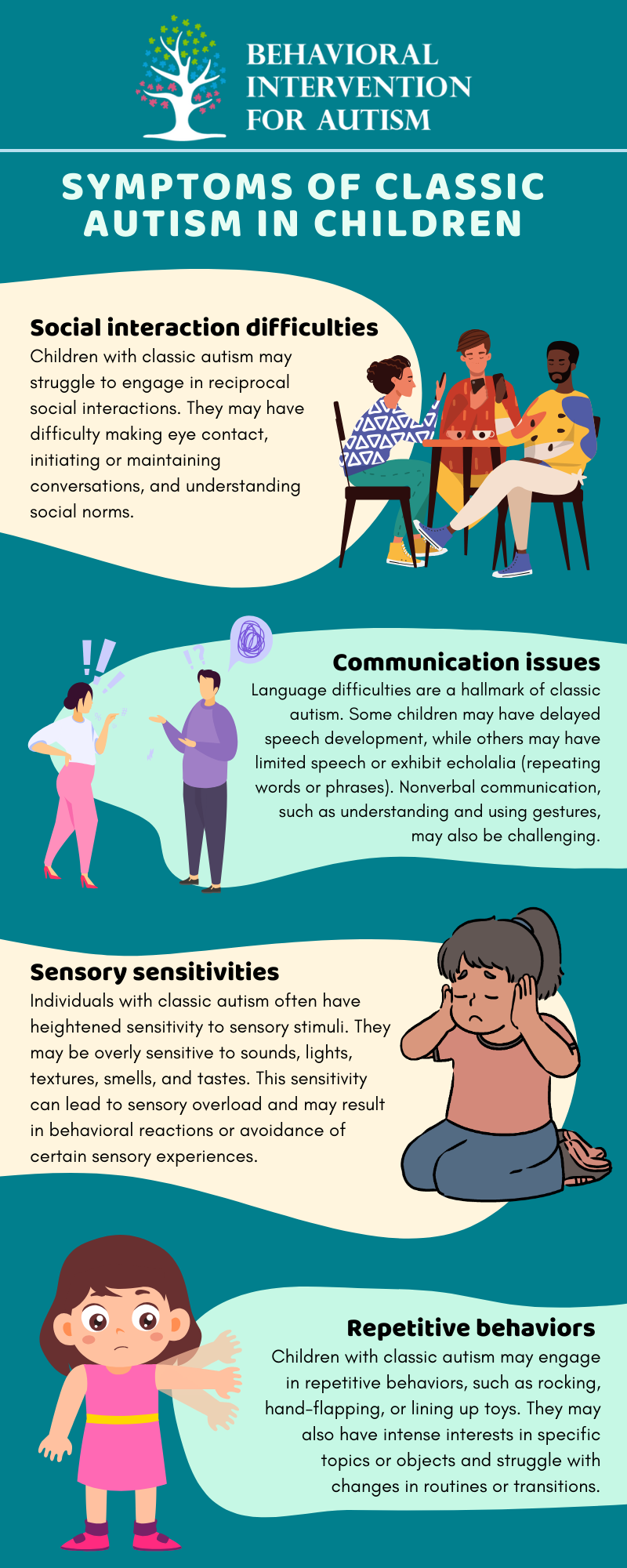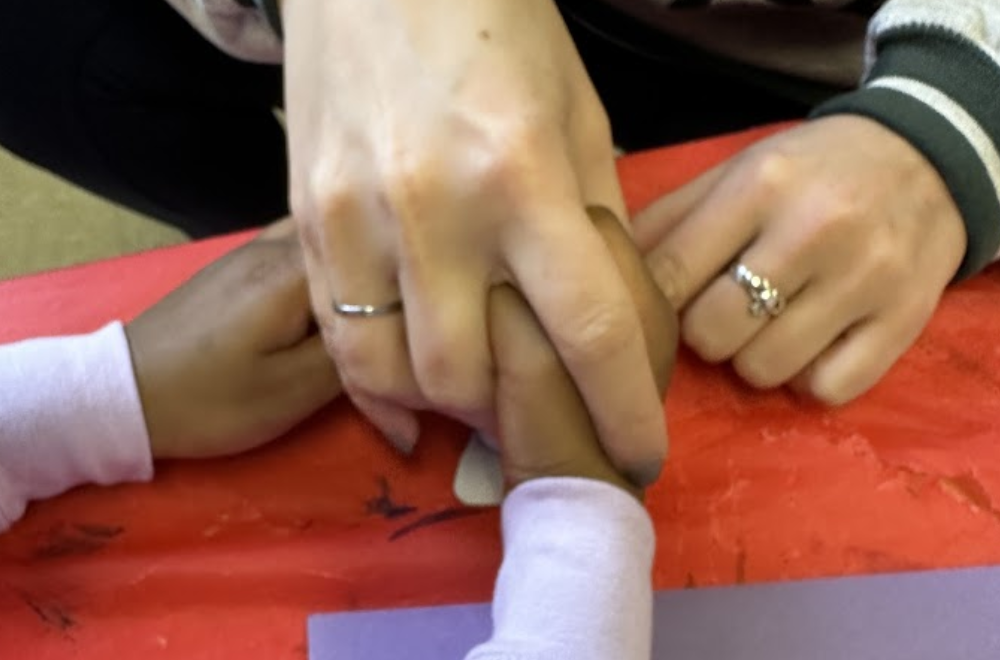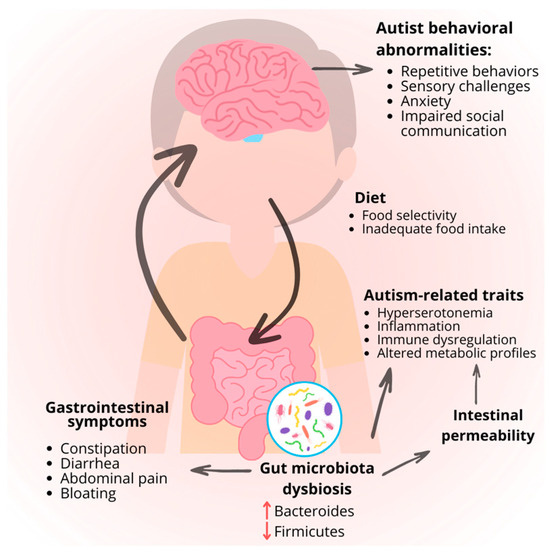Why early support from an Aba Therapist is key
Why early support from an Aba Therapist is key
Blog Article
Understanding the Impact of Behavioral Autism on Every Day Life and Social Interactions
You may not realize how deeply behavior autism influences day-to-day life and social interactions. Individuals on the spectrum commonly navigate a globe loaded with communication difficulties and sensory overload. These obstacles can lead to aggravation and seclusion, affecting their relationships and overall well-being.
Specifying Behavior Autism and Its Attributes
Behavioral autism, frequently described as autism spectrum disorder (ASD), encompasses a variety of problems defined by obstacles in social communication, interaction, and repeated habits. You could see that people with ASD frequently have a hard time to interpret social cues, which can bring about misunderstandings in conversations. They might locate it hard to establish eye call or involve in tiny talk, making social circumstances feel overwhelming.
Interaction problems can materialize in various means, from delayed speech development to a choice for utilizing fewer words. By recognizing these traits, you can promote an atmosphere that promotes acceptance and encourages efficient interaction, helping people with autism flourish in their everyday interactions.
The Range of Autism: Comprehending Variability in Behavior
Autism range problem (ASD) isn't a one-size-fits-all medical diagnosis; it differs widely among people. You may observe that some individuals with ASD exhibit mild signs, while others may encounter extra substantial obstacles. This irregularity can materialize in habits, interests, and sensory level of sensitivities. You might experience individuals that are very verbal and engage easily in discussions, while others could favor solitary activities or interact non-verbally.
Additionally, the means individuals with ASD respond to sensory input can differ significantly; some may be bewildered by loud noises or intense lights, whereas others thrive in promoting environments. The spectrum additionally includes distinctions in social communications; some people might battle to translate social cues, while others browse social setups with loved one convenience. Comprehending this irregularity is crucial, as it aids you value everyone's special experience and tailor assistance to their certain needs, promoting a more comprehensive environment for everyone.
Communication Obstacles Dealt With by Individuals With Autism
When you connect with people on the autism spectrum, you may notice their special interaction obstacles. They usually deal with difficulties with both nonverbal and verbal signs, which can impact their social interactions. Comprehending these obstacles is crucial for promoting far better connections and assistance.

Verbal Interaction Difficulties
Numerous individuals on the autism range experience spoken interaction difficulties that can substantially influence their daily interactions. You could find it challenging to reveal your ideas, sensations, or needs clearly. This can bring about frustration for both you and those around you, as misconceptions occur. You may battle with launching conversations, preserving a topic, or recognizing subtleties in speech. Frequently, you might favor using simple language or recurring expressions, which can restrict your capability to engage in much deeper discussions. Your tone, pace, or quantity might not line up with social expectations, creating others to misinterpret your objectives. Acknowledging these obstacles can aid you and your support network create approaches to enhance communication and promote better connections with others in your life.
Nonverbal Communication Barriers
Verbal communication isn't the only obstacle individuals on the autism spectrum face; nonverbal communication obstacles can be just as significant. These obstacles can lead to misconceptions or false impressions of social hints, making communications feel confusing or frustrating. By attending to nonverbal communication, you can discover techniques to enhance your social experiences and boost your general quality of life.
Social Interaction Effects
Social interactions can frequently really feel overwhelming because of the distinct communication difficulties dealt with by individuals with autism. You could have problem with analyzing social hints, making it difficult to comprehend sarcasm or body language. This can cause misunderstandings or uncomfortable minutes in discussions. Furthermore, launching and keeping discussions may feel challenging, triggering anxiousness in social scenarios. You might like structured atmospheres, making spontaneous interactions uneasy. It's also common to experience difficulty in taking part in little talk, which can prevent developing brand-new friendships. Identifying these challenges can assist you find strategies to boost interaction, such as exercising social skills in secure setups or using aesthetic aids - Aba Therapist. Recognizing your needs enables you to browse social communications with better self-confidence and simplicity.
Social Communication and Connection Structure in Autism
While structure partnerships can be testing for individuals with autism, recognizing their unique perspectives and interaction styles can promote purposeful connections. You may observe that lots of individuals on the range favor straight interaction and may deal with social signs or tiny talk. By being uncomplicated in your interactions, you can assist produce a setting where they really feel comfy.
Put in the time to pay attention and observe exactly how they reveal themselves. This understanding can lead you in steering conversations a lot more efficiently. Participating in shared interests can also work as a bridge to deeper connections. Whether it's a pastime, a favored program, or a shared interest, these common threads can open up doors to friendship.
Daily Life Regimen: Navigating Approaches and challenges
Maneuvering day-to-day live regimens can be especially challenging for people with autism, particularly when unforeseen modifications happen. You may locate comfort in having a structured schedule, as it assists you expect what's following. When disturbances occur, it's regular to feel overloaded or distressed. To browse these challenges, consider executing visual routines or lists. These tools can give clearness and peace of mind.
Establishing a routine that consists of sensory breaks can also be helpful. You can prepare time-outs throughout your day to recharge. It's necessary to connect with those around you, letting them understand your demands and preferences. This aids develop an understanding setting.
Finally, method mindfulness methods to take care of anxiety and anxiousness. Easy breathing workouts or basing techniques can make a significant difference. By incorporating these techniques, you can boost your everyday routine and reduce disruptions, making life really feel a lot more convenient.
Toughness and Capacities of People on the Autism Range
Recognizing everyday life routines is just one aspect of the autism experience. Several people on the autism spectrum possess amazing strengths and capabilities that set them apart.
Additionally, your memory skills typically shine, specifically in locations of interest. Aba Therapist. This flair for maintaining info can make you a valuable resource in fields like art, scientific research, or technology. You might additionally display solid visual thinking, enabling you to envision complicated ideas and resolve issues artistically
Furthermore, your unique point of view on the world can promote empathy and understanding in others, enriching social communications. Embracing these strengths not only increases your self-confidence however also helps others appreciate the varied abilities you bring to the table.
Producing Inclusive Atmospheres for Individuals With Autism
Creating inclusive atmospheres for people with autism starts with creating sensory-friendly spaces that satisfy their distinct demands. You can also foster chances for websites social communication, helping to build connections and friendships. By making these adjustments, you'll add to an extra inviting atmosphere for every person.
Creating Sensory-Friendly Spaces
While making sensory-friendly areas, it's important to assess the distinct requirements of individuals with autism. Start by picking relaxing colors and soft lights to produce a relaxing environment. Incorporate peaceful zones where people can pull away and reenergize when bewildered. You'll wish to lessen loud sounds and disturbances, utilizing soundproof materials or white sound makers to assist keep tranquility. Take into consideration tactile aspects like soft fabrics or fidget-friendly items that can supply comfort. Identify that rooms are adaptable, enabling very easy reformation to accommodate various activities. Consist of visual routines or clear signage to aid individuals browse here the room with confidence. By thoughtfully incorporating these components, you can develop a welcoming environment that supports sensory requirements and advertises total health.
Advertising Social Communication Opportunities
Designing sensory-friendly rooms not only addresses specific comfort yet likewise sets the stage for meaningful social communications amongst people with autism. Motivate peer mentoring, pairing people with autism with supportive peers that can lead them via social circumstances. By implementing these strategies, you can improve social chances, assisting people with autism build relationships and enhance their social abilities in a risk-free, welcoming setting.

Regularly Asked Questions
How Can Buddies Support A Person With Behavioral Autism?
You can sustain a close friend with behavior autism by being individual, listening actively, and appreciating their borders. Participate in activities they appreciate, connect honestly, and develop a comfy environment where they feel valued and recognized.
What Resources Are Readily Available for Parents of Kid With Autism?
You can discover numerous resources for moms and dads of youngsters with autism, including support system, educational websites, and neighborhood area services. Getting in touch with other moms and dads can likewise supply beneficial insights and shared experiences to assist browse obstacles.
Can Behavioral Autism Change Gradually?

Yes, behavioral autism can change gradually. You might discover shifts in interaction, social skills, and behavior as your kid grows. Early treatment and assistance frequently play crucial duties in these developmental changes.
Exactly How Do Sensory Sensitivities Influence Daily Life?
Sensory level of sensitivities can make daily experiences frustrating. You could fight with brilliant lights or loud sounds, causing stress or avoidance. Finding atmospheres that suit your requirements can significantly improve your convenience and overall every day life.
What Prevail Misconceptions Concerning Behavioral Autism?
You could assume behavioral autism only influences interaction skills, but it's even more complex. Many assume people lack empathy or intelligence, which isn't real. Recognizing these false impressions aids foster approval and support for those on the range.
Behavioral autism, often referred to as autism range disorder (ASD), incorporates an array of conditions defined by difficulties in social interaction, interaction, and repeated actions.Social communications can commonly really feel overwhelming due to the distinct communication challenges faced by individuals with autism.Designing sensory-friendly spaces not only addresses private comfort but additionally sets the stage for significant social communications among people with autism. Motivate peer mentoring, coupling individuals with autism with helpful peers who can lead them with social scenarios. By Autism Spectrum Therapies applying these approaches, you can enhance social chances, aiding individuals with autism construct relationships and reinforce their social skills in a risk-free, welcoming setting.
Report this page